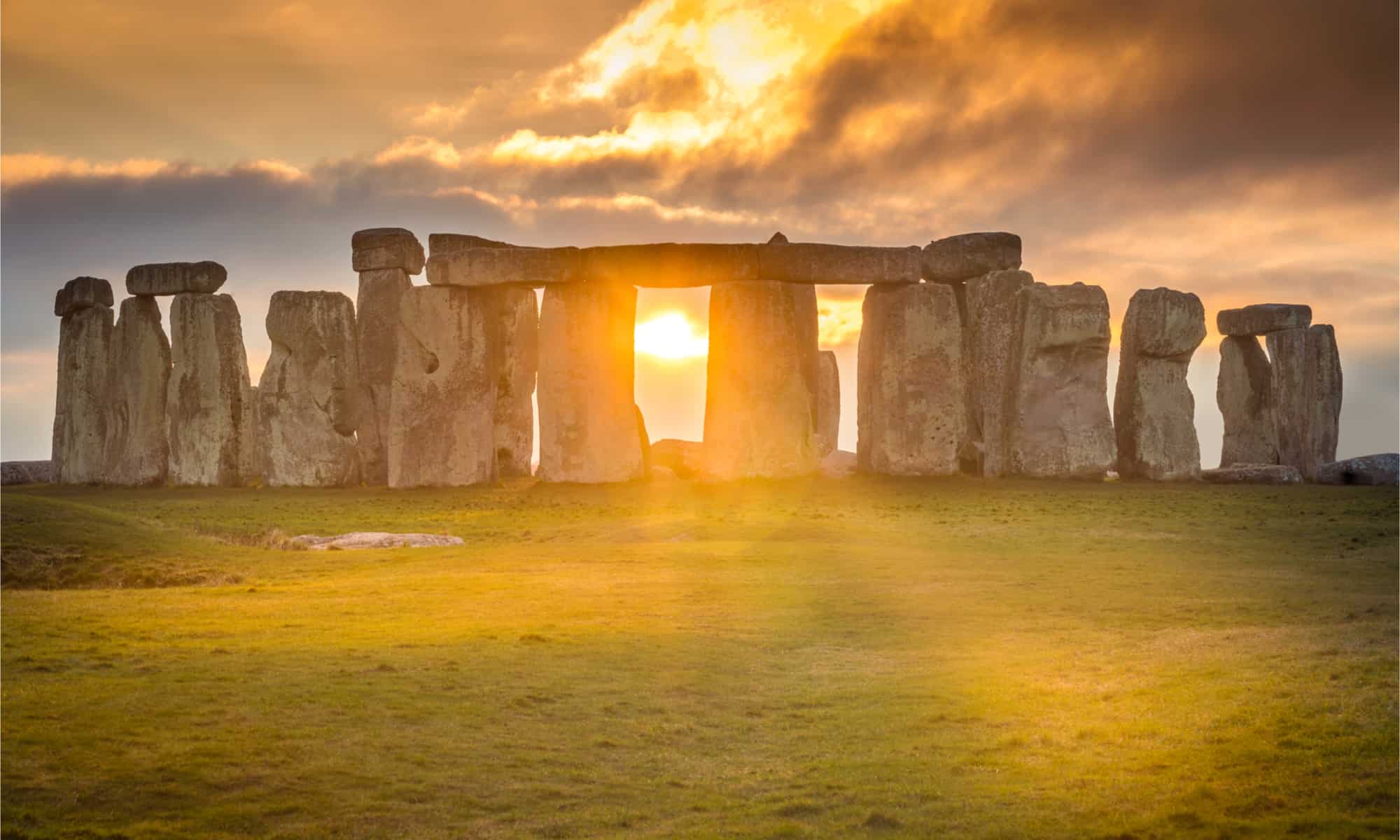A day of celebration and scientific significance, the winter solstice is a notable event. Historic achievements have happened on the winter solstice. Different cultures mark the winter solstice with festivals and long-standing traditions. At one time, the winter solstice was rumored to be the final day of humanity. However, the winter solstice doesn’t occur at the same time each year, which can make it difficult to track. Keep reading and you’ll find out when the 2023 winter solstice occurs and some things about the winter solstice you may not have known!
When is the 2023 Winter Solstice?
This year, the solstice occurs on December 21 at 10:27 p.m. EST. Because the Earth takes slightly more than one calendar year to complete its orbit of the sun, the time and date of the solstice varies. In 2022, the solstice took place on December 21 at 4:47 p.m. EST, a difference of five hours and 40 minutes.
1. Does Winter Begin on the Solstice?
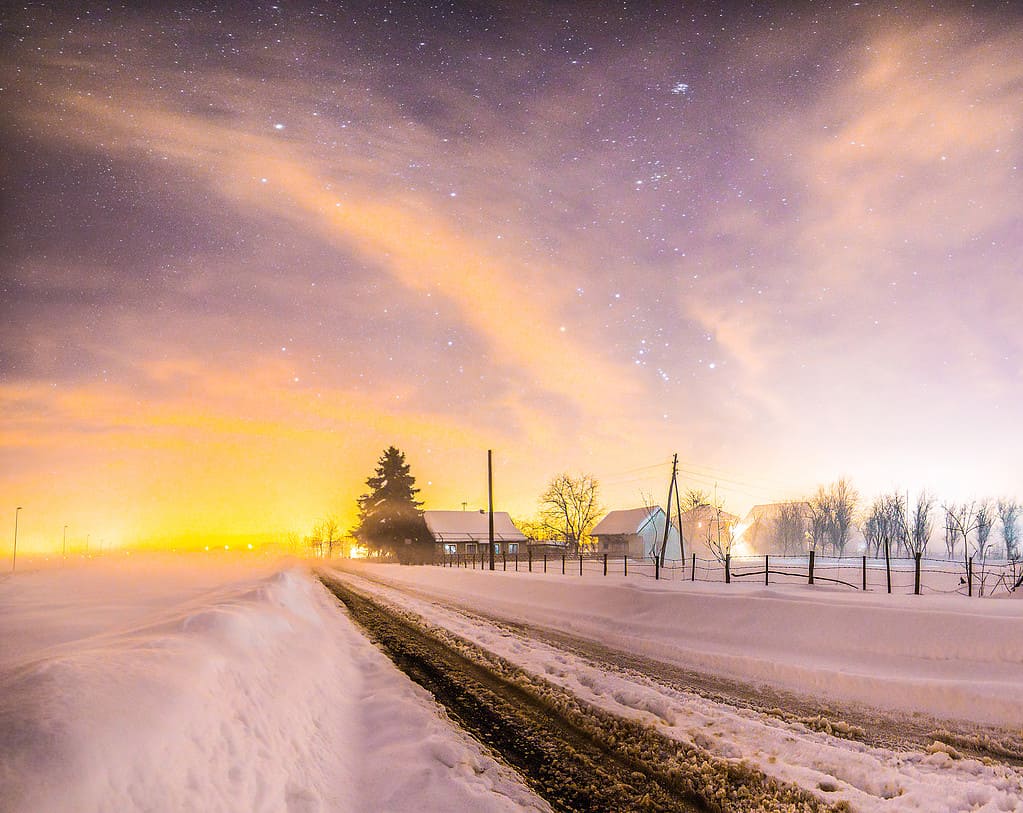
On the winter solstice, the Earth is closest to the sun.
©SVphotography/iStock via Getty Images
Astronomically, the solstice marks the official start of winter. That’s not the case for meteorologists and climatologists. For them, winter begins on December 1 and comes to an end on the last day of February. Weather experts break the calendar year down into three-month periods. This method allows for a more efficient system of keeping records of weather patterns. Slicing the year up into months also reflects temperature records during a standardized time frame. For much of the U.S., the coldest temperatures occur between December 1 and the last day of February.
2. What Happens After the Winter Solstice?
Residents of the Northern Hemisphere will see longer days and shorter nights. Some of the coldest days of the winter occur after the solstice has passed. After the winter solstice, the sun starts moving north again, slowly making the Northern Hemisphere warmer and brighter.
3. One Day, Two Solstices
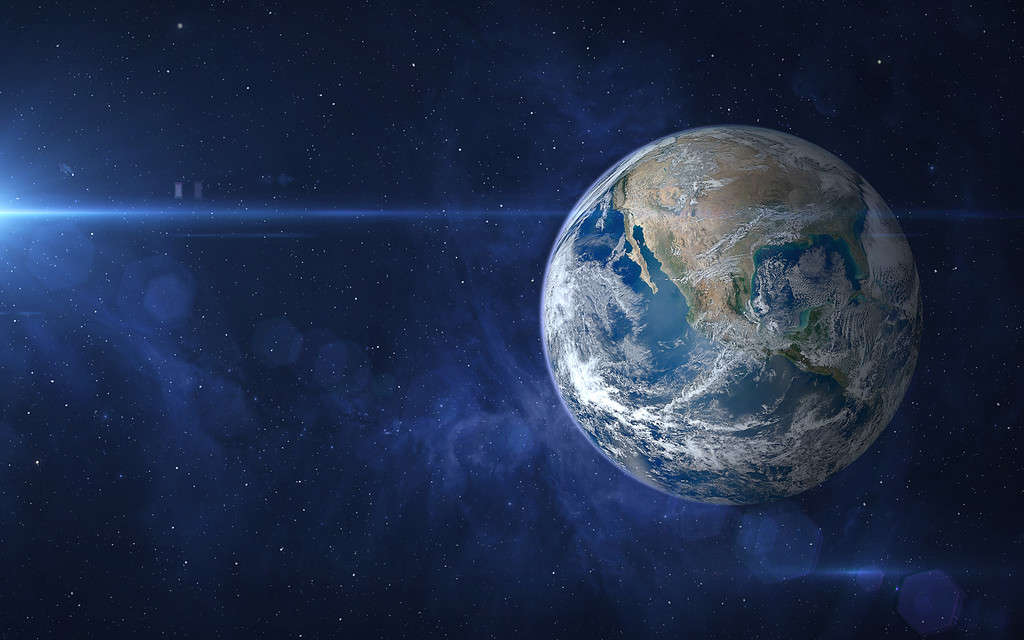
No matter where on Earth you are, the winter solstice is worth celebrating!
©buradaki/iStock via Getty Images
In the Northern Hemisphere, the December solstice marks the astronomical beginning of winter. Earth’s axis becomes tilted the furthest away from the sun. In 2023, the Northern Hemisphere will only receive a little over seven hours of daylight. That makes December 21, 2023, the shortest day of the year.
When it’s winter in the Northern Hemisphere, it’s summer in the Southern Hemisphere. December’s solstice is the longest day of the year in that part of the world. Places like New Zealand and Australia can receive the most amount of sunlight in one day on the solstice.
4. The Sun Doesn’t Really Stop Moving
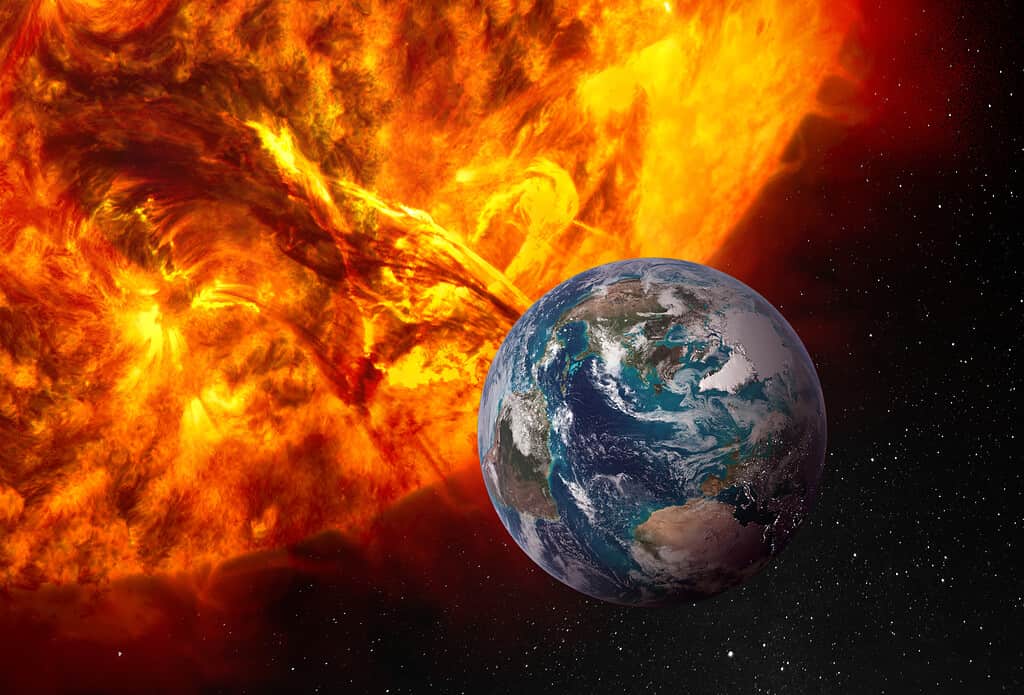
“Solstice” is a combination of the words “sol,” meaning “sun” and “sistere,” which means “to stand still.”
©Elen11/iStock via Getty Images
Some people refer to the winter solstice as “the day sun stands still.” From a certain perspective, it seems that way. Since the sun arrives at its southernmost position on the solstice, it appears to quit moving over the Tropic of Capricorn. Because the sun moves slowly, it seems to remain still for approximately two weeks. Then, the sun seems to begin moving back towards the north.
5. Solstice Shadows
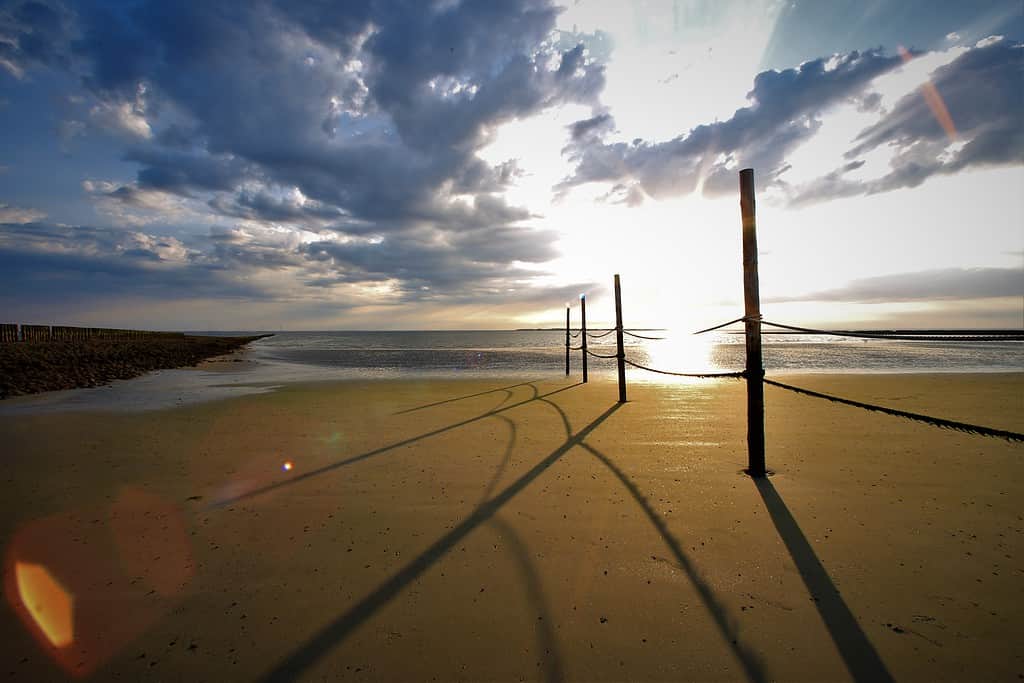
Shadows are created when objects block light.
©Jan Pauser/iStock via Getty Images
Go outside at high noon on the day of the winter solstice. Because the sun is at its lowest position in the sky, you’ll cast the longest shadow you have all year. Conversely, the sun at high noon on the summer solstice produces the shortest shadows of the year.
6. No Solstice Full Moon in 2023
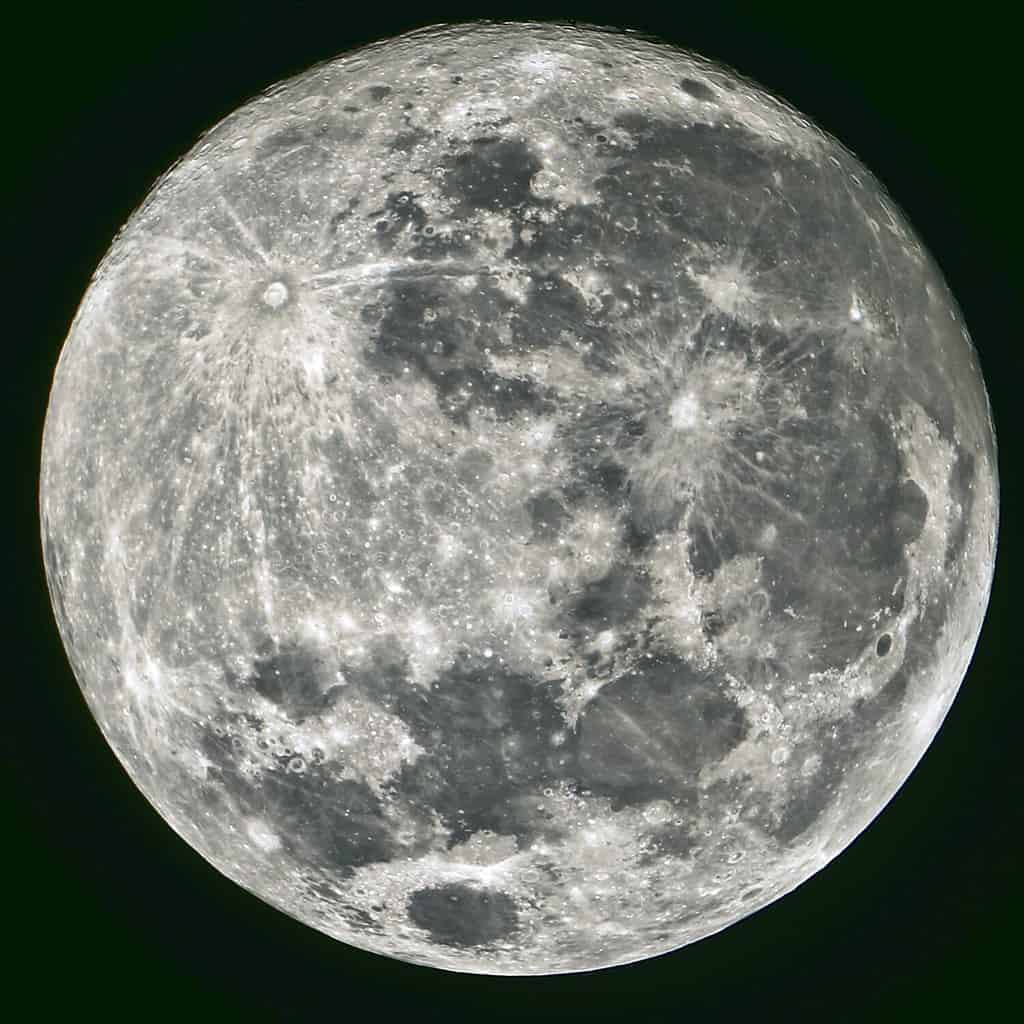
Author H.G. Wells introduced the theory that the moon was hollow in his novel
The First Men in the Moon.
©Quaoar/Shutterstock.com
We only get to see the full moon once every 28 days. It’s rare to see a full moon on the winter solstice. In 2023, the moon will be in its waxing gibbous phase with nearly 70 percent illuminated. The last time a full moon shone on the December solstice was in 2010. There won’t be another full moon on the winter solstice until 2094.
7. Pilgrims Arrived at Plymouth Rock on the Winter Solstice
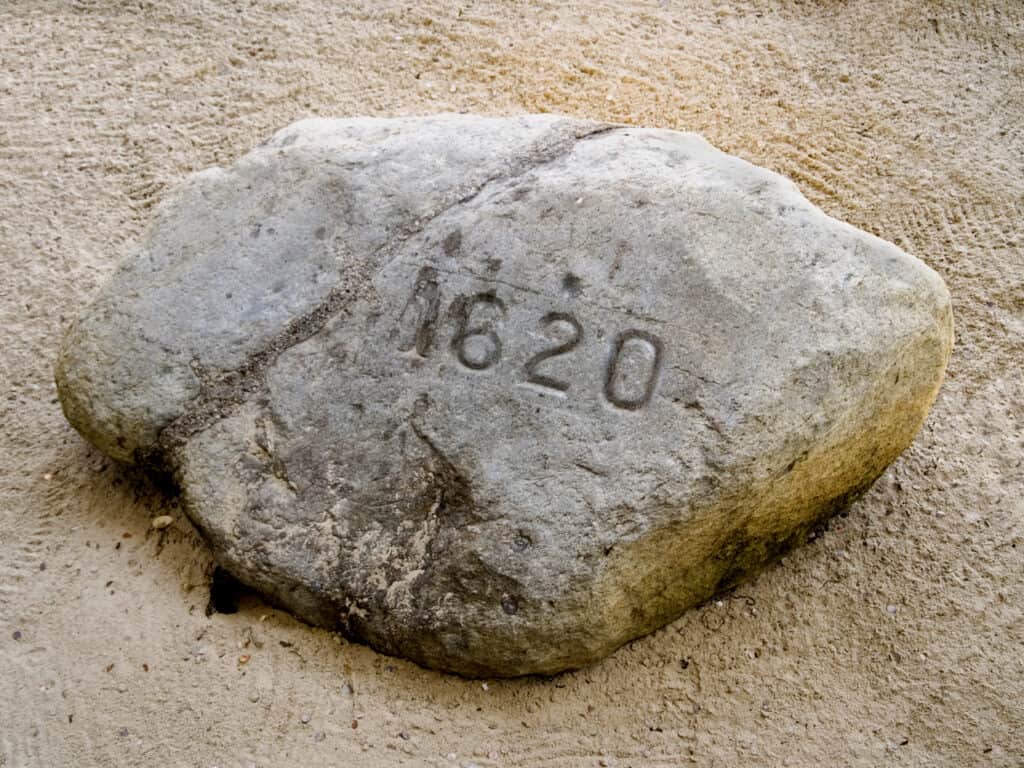
Partially buried, Plymouth Rock is estimated to weigh 10 tons.
©Suchan/Shutterstock.com
After an arduous sea journey, passengers from the Mayflower landed at Plymouth Rock on December 21, 1620. Out of the Mayflower’s passengers, 41 were Pilgrims seeking a place where they could experience religious freedom without persecution from the Church of England. The remaining 61 people were referred to as “strangers” by the Pilgrims. A London-based trading company called The Virginia Company, financed the voyage. Shareholders assumed they would be repaid from colonists’ profits after landing in Virginia. However, the Mayflower missed its mark and landed in Massachusetts. In time, the passengers of the Mayflower established themselves as the first permanent European settlements in the New World.
8. A Solstice Trip to the Stars
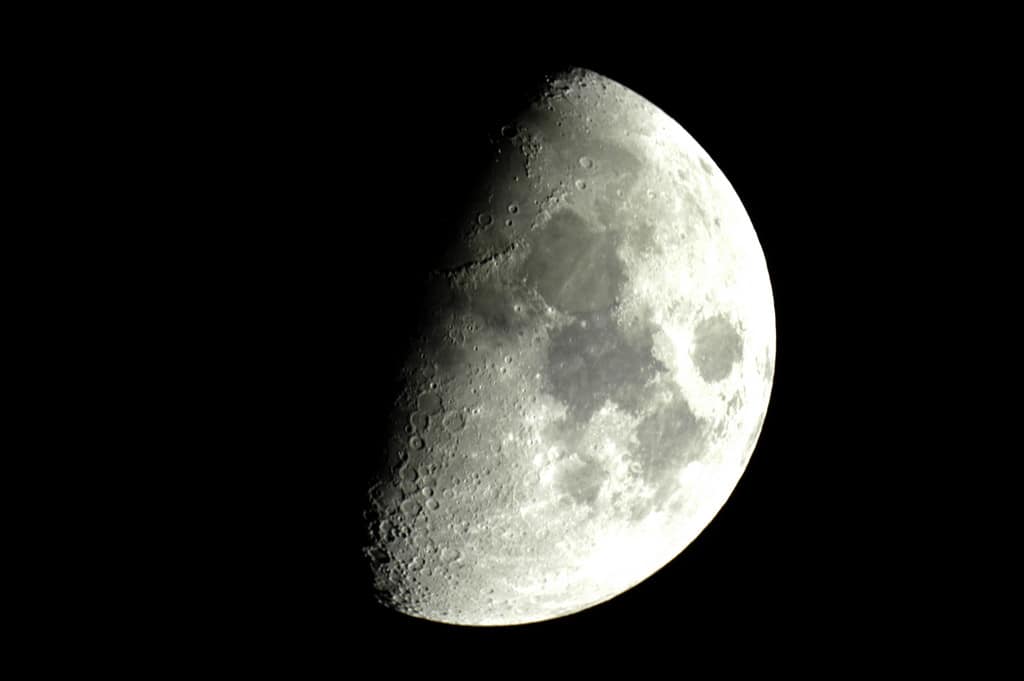
In all, Apollo 8 spent 20 hours in lunar orbit.
©Richard Gilder/iStock via Getty Images
Even though we won’t get a full moon on this year’s winter solstice, the moon still plays an important part in the day’s history. In 1968, a three-man crew– Bill Anders, Frank Borman, and Jim Lovell– left Earth from Kennedy Space Center in the Apollo 8 spacecraft on December 21, 1968. It was a proof-of-concept journey. If they could orbit the moon, then American astronauts could land there. On Christmas Eve, Apollo 8 completed 10 lunar orbits before returning home on December 27. The mission was a success, spurring the Apollo space program to a successful manned moon landing in July 1969.
9. Death and Rebirth
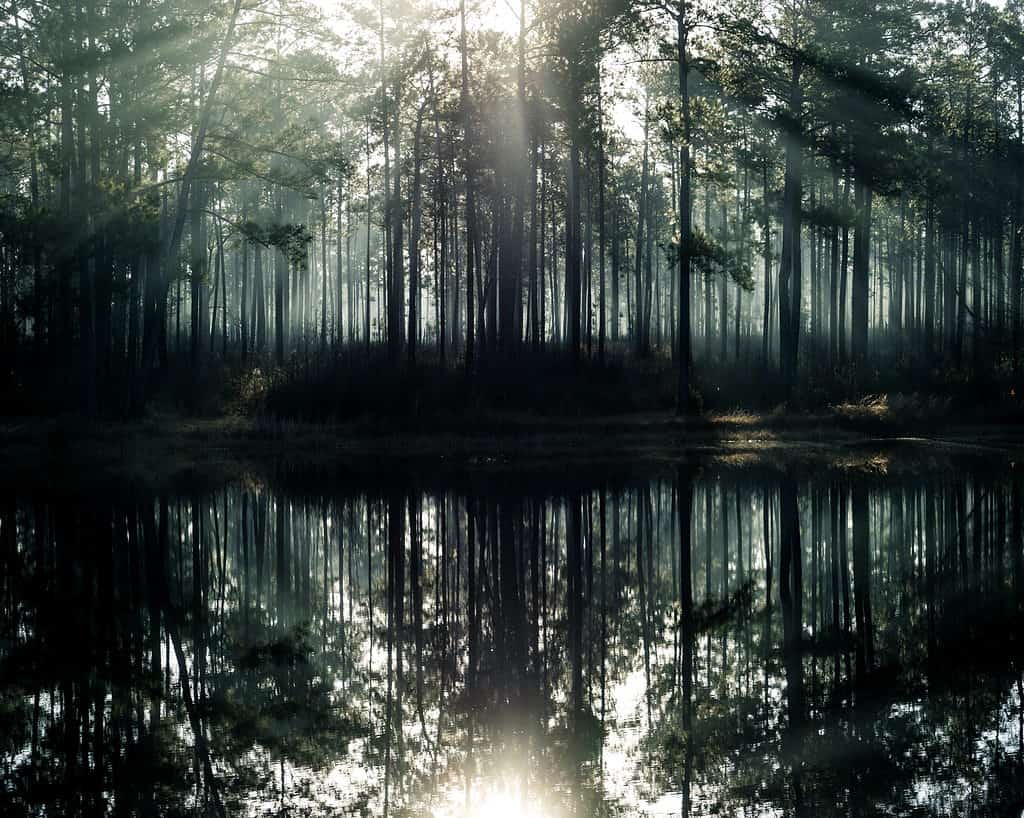
Even now, people attach spiritual significance to the winter solstice.
©Steven L.J. Reich/Shutterstock.com
Some pagan traditions paint the winter solstice as a period of death and rebirth. Because the solstice marks the shortest day of the year, they regarded it as the death of the sun or the sun god. But, the winter solstice is also the moment when longer days and shorter nights begin. In that sense, the winter solstice marks a rebirth of the sun. Although the weather remained cold, spring would eventually arrive. In essence, the world was becoming new again, reborn for another season.
Tracking the sun was important for ancient communities. It helped them know when to plant to receive the best yield. It showed them when to harvest and pull grain in for the long winters. Knowing when the winter solstice was also helped people estimate how long it would be until spring. In order to keep tabs on the sun and the seasons, some people built monuments that would make it obvious when the winter solstice had arrived.
10. Stonehenge

Rocks at Stonehenge weigh 20 tons or more!
©Chuta Kooanantkul/Shutterstock.com
Of all the ancient monuments constructed to mark the seasons, none may be more well-known than the giant rock circle known as Stonehenge. Located in Wiltshire in southern England, Stonehenge was built approximately 4,500 years ago. While the number of stones used in its construction is unknown, Stonehenge currently consists of 83 massive stones. When the sun sets on the winter solstice, the sunlight is perfectly framed between two standing stones in the center of Stonehenge. Mysteries surround Stonehenge, including how the stones were transported from areas more than 200 miles away. Archaeological digs in the area indicate that farmers built Stonehenge and used it to mark both the winter and summer solstices. This would have been important to an agrarian society to mark growing and harvest seasons.
11. Newgrange
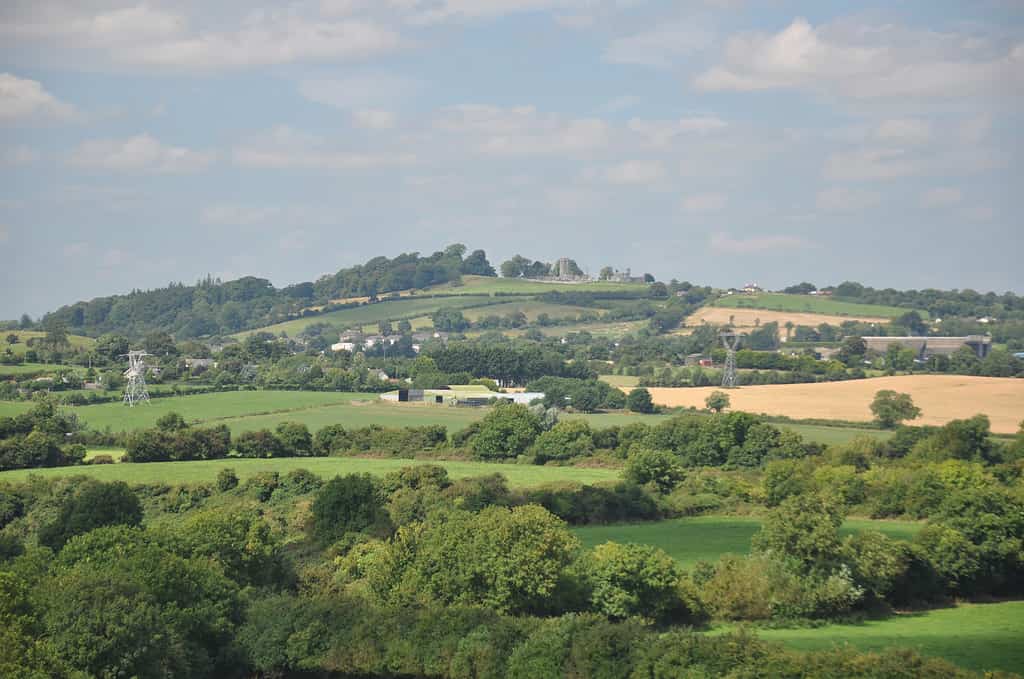
Irish mythology dictates Newgrange as the birthplace of Cuchulainn, the warrior who defended Ulster from the attacks of Queen Maeve.
©Jen Peng/iStock via Getty Images
Older than both Stonehenge and the Giza Pyramids, Newgrange was constructed sometime around 3,200 B.C. as a tomb. Although it was discovered in the late 1600s, full-fledged excavation work at Newgrange did not begin until 1962. Workers discovered a small structure on top of Newgrange, dubbed the “roof box.” As the sun rises on the winter solstice, sunlight enters Newgrange through the roof box and illuminates the tomb for 17 minutes. Newgrange draws more than 200,000 visitors per year. To prevent the clamor of visitors to Newgrange on the winter solstice, a ticket lottery was established in 2000. Only 60 people are allowed inside Newgrange during the winter solstice event.
12. Tulum

Originally, Tulum was called Zama, which means “City of Dawn.”
©Soft_Light/iStock via Getty Images
Near Cancun, Mexico lie the ruins of the Mayan-built city of Tulum. In its heyday, over 800 years ago, Tulum served as a seaport and trade center. Mayans were fully aware of the importance of the solstices. When the sun rises on the winter solstice, the sunlight hits a hole at the top of one of the stone ruins. That winter solstice sunrise light disperses into a beautiful starburst effect.
13. The Goseck Circle

Stretching 75 meters across, the Goseck Circle may have been used for ritualistic purposes.
©Iurii Buriak/iStock via Getty Images
Not discovered until 1991, the Goseck Circle in Goseck, Germany, is one of the oldest solar calendars on Earth. Carbon-dated back to 4,900 B.C., the Goseck Circle may have been a sacred site for its builders. Archaeological digs have uncovered not only pottery shards but the remains of both decapitated animals and humans. Spaced around the wall that enclosed the Circle are three gates. On the winter solstice, the sun rises from the southeast gate and sets behind the southwest gate. While the actual function of the Goseck Circle has not been fully established, it exists on the same latitudinal line as Stonehenge. That geographical fact leads many to believe that the Goseck Circle was used primarily as a solar observatory.
14. Saturnalia
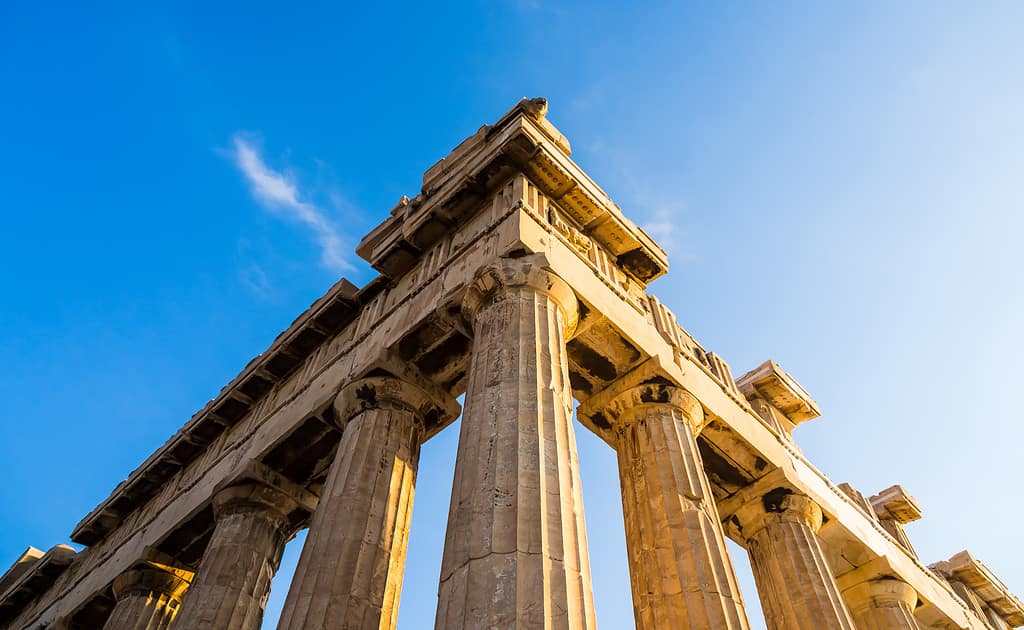
Lucian, the Greek poet, described Saturnalia as a time when “the serious is barred.”
©Natallia Pershaj/iStock via Getty Images
Ancient Romans knew how to party! Saturnalia was a seven-day-long festival. Traditionally, Saturnalia began on December 17 and encompassed the day of the winter solstice. Role reversal and relaxed rules were the hallmarks of Saturnalia. Slaves were served dinner by free Romans. Public gambling, normally forbidden by Roman law, was permitted. Togas were replaced by the less formal synthesis, an informal dress-like garment. Hedonism held sway as food and wine were free and accessible to everyone. During the final days of Saturnalia, coinciding with the winter solstice, Romans gave each other gifts such as wax figurines and candles. As Christianity gained prevalence, many Saturnalia rituals were absorbed and transformed to fit the calmer celebration of Christmas.
15. Ghosts Might Walk on Yule

Telling ghost stories was a winter solstice tradition in Victorian England.
©dosmass/iStock via Getty Images
Derived from the Scandinavian word juul, Yule is a Pagan winter celebration that encompasses the winter solstice. Feasting and gift-giving are all part of the tradition. Depending on the culture, Yule could last as long as twelve days. Like some other mid-winter festivals, Yule marks the sun’s rebirth and the beginning of longer days and shorter nights. Traditionally, on the winter solstice evening, people burned a Yule log. In some cultures, families brought in an entire tree! They began by lighting the largest end of the true first. As the tree was consumed, they pushed the tree further into the hearth to keep the fire burning.
According to Old Norse traditions, the division between the worlds of the living and the dead (known as “the veil”) became thin on the winter solstice. Drawn to the light of the Yule log, ancestral spirits would visit their families’ homes. These spirits would somehow give people advice about how to weather the upcoming year. Evil spirits roamed during the winter, as well. Germanic peoples used evergreen wreaths and holly to ward off those maleficent ghosts.
16. The Victory of the Oak King

Celtic Druids considered mistletoe to be a fertility booster.
©Oksana_Schmidt/iStock via Getty Images
Modern-day Druids call their winter solstice celebration Alban Arthan, which means the “Light of Winter.” In Druidic lore, the solstice represents the defeat of the Holly King, who is in control from the summer solstice to the winter solstice, by the Oak King, who reigns from the winter solstice to the summer solstice. Since days start growing longer after the winter solstice, the Oak King’s yearly victory makes symbolic sense. During winter solstice rituals, ancient Druids considered mistletoe sacred because it remained green during the cold weather.
17. Counting Down to Spring After Dongzhi

Traditionally served during the Chinese winter solstice celebration, tangyuan represents unity and togetherness.
©YamisHandmade/iStock via Getty Images
One of the most important festivals in China, Dongzhi takes place during the winter solstice. Food is an essential part of Dongzhi as people prepare special dishes like roasted pork, dumplings, and rice balls called tangyuan. During Dongzhi, people worship their ancestors by burning incense and setting out symbolic plates of food. In Southern China, people mark the time from the winter solstice until the impending arrival of spring. Tradition holds that there are nine periods of nine days called the Nines of Winter. After the final nine-day period and thereafter, the ground in the fields becomes warm enough to work.
18. Burn the Clocks in Brighton

Time is the main theme of the Burning the Clocks festival in England.
©bee32/iStock via Getty Images
People in Brighton, England celebrate the winter solstice with a festival called Burning the Clocks. This festival marks the passing of time in elaborate fashion. Not only does a parade wind through the Brighton streets, but celebrants create black and white paper lanterns. Participants wear costumes, all of which are decorated with a clock face. At the end of the parade route on Brighton Beach, the lanterns are placed into a large bonfire as fireworks explode. It’s a raucous way to invite to send off the winter solstice!
19. Maya-pocalypse No
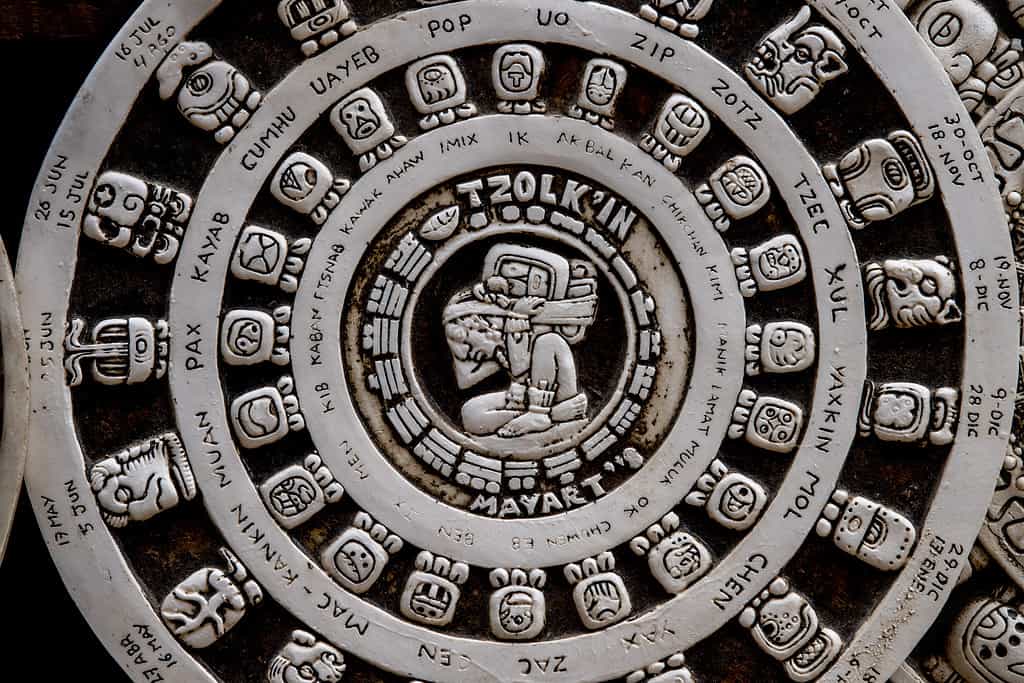
Mayans considered August 13, 3114 B.C. to be the start of creation.
©izanbar/iStock via Getty Images
All over the planet, people were ready for the world to end on the winter solstice, December 21, 2012. On that day, the Mayan calendar allegedly expired. Connections, propagated by the internet, were made between that event and the myth that a mysterious planet called Nibiru would collide with Earth on that day. Did the Mayans predict doomsday? No. They did not. According to NASA, Nibiru does not exist. The Mayan Calendar is structured around a cycle that lasts 5,128 years, after which it begins again. While the 2012 winter solstice marked the first day of astronomical winter, it did not herald the end of the world.
20. String Up the Mushrooms
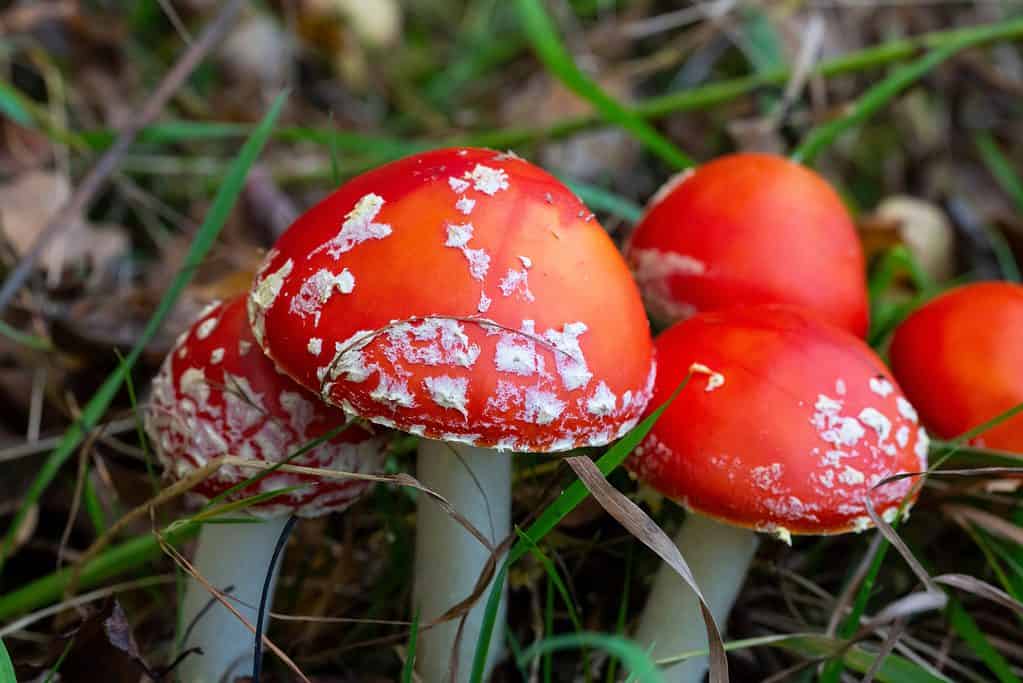
Hallucinogenic mushrooms may have influenced modern Christmas traditions.
©FotoLot/Shutterstock.com
Recognizable by its red spotted cap, the poisonous fly agaric mushroom was used by indigenous people of the North Pole as part of their winter solstice rituals. Similarly to how stockings are attached to the fireplace mantle, fly agaric mushrooms were hung up to dry. Allowing the mushrooms to dry out reduced the inherent toxicity of the mushrooms. Shamans consumed the mushrooms, which had hallucinogenic properties. Eating those mushrooms made the shamans believe they were able to fly. Some folklorists believe that stories of those experiences became part of the legend of Santa Claus and his flying sleigh.
Thank you for reading! Have some feedback for us? Contact the AZ Animals editorial team.

